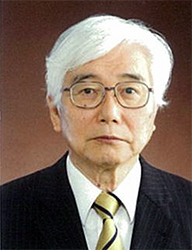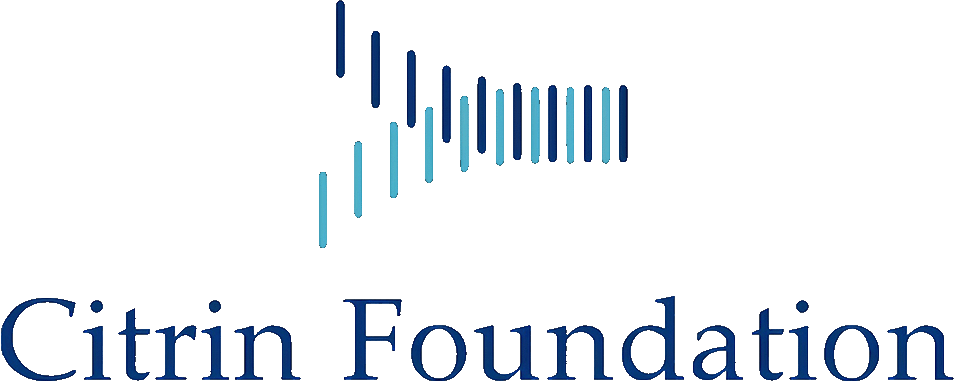Takeyori SAHEKI, MD, PhD
Guest Researcher at Department of Hygiene and Health Promotion Medicine, Kagoshima University Graduate School of Medical and Dental Sciences, Kagoshima, Japan
Introduction
Citrin deficiency (CD) is caused by a deficiency of citrin or liver-type mitochondrial aspartate glutamate carrier 2 encoded by SLC25A13. Since citrin plays a role in multiple metabolic pathways such as protein, nucleotide and urea syntheses in cytosol, aerobic glycolysis as a member of malate aspartate shuttle, and gluconeogenesis from lactate, citrin deficiency causes multiple diseases including neonatal intrahepatic cholestasis (NICCD), adult-onset type II citrullinenia (CTLN2), failure to thrive with dyslipidemia (FTTDCD), pancreatitis, NASH and hepatoma. Saheki and coworkers have not only established the disease entity of CD, but also created mouse model of CD, citrin/mitochondrial glycerol-3-phosphate dehydrogenase (Ctrn/mGPD) double-KO mice. The mouse model of CD has been shown to be extremely useful for making clear the Pathophysiology of CD and finding effective supplements. In these research projects, we are performing research on further clarification of still-unknown Pathophysiology and finding novel therapeutic procedures.
Research projects
- To establish hyperammomenia (HA) model
We established a HA model by enteral administration of glycine (Gly; 20 mmol/kg bw) in combination with sucrose (Suc; 4g/kg bw) or ethanol (EtOH; 5% solution at a dose of 20 ml/kg); Administration of Gly caused a slight increase in blood ammonia even in wild-type mice, and the HA was enhanced by simultaneous administration of Suc or EtOH in Ctrn-KO and double-KO mice. The highest blood ammonia level was obtained by administration of Gly+Suc in double-KO mice, reaching over 1000 mg/dl. The HA model was very useful for assessing effectiveness of supplements including amino acids, MCT, sodium pyruvate and others for treatment of HA in CD. We have found aspartate (Asp) as one of effective substances together with its mechanism of action. Administration of serine probably shows effects similar to Gly. - Effect of sterilization of chow
Autoclave sterilization of chow, CE-2, resulted in making the symptoms of the double-KO mice severer. The double-KO mice fed sterilized CE-2 showed higher blood ammonia and lower body weight during development as compared with the double-KO mice fed the non-sterilized CE-2. Although this showed importance of foods or its art of cooking on Pathophysiology of CD, we have not found what caused the difference; we have tested Vitamin C, multivitamin and lysine which were known decreased during autoclave sterilization. - Liver perfusion experiments
Liver perfusion experiments clearly showed that alanine (Ala) was effective in activating ureagenesis from ammonium chloride, but aspartate (Asp) was not, revealing discrepancy of the Asp effect between in vivo and in vitro, and leading to the conclusion of pivotal role of small intestine-liver inter-organ amino acid metabolism. Furthermore, Ala decreased the perfusate lactate/pyruvate ratio while Asp didn’t. - The most effective compound against HA
We have already shown that some amino acids were effective in normalizing the blood ammonia levels of double-KO mice increased by Gly+Suc, together with the mechanisms of action of the amino acids (submitted). Details will be open following acceptance of the manuscript. - Hepatic argininosuccinate synthetase (ASS) decrease
We postulate that hepatic ASS was decreased by the action of some microRNA increased in the liver of CTLN2 patients. We will start preparing RNA samples from liver of CTLN2 patients and creation of genetically modified HepG2 cells for assessment of effect of microRNA extracted from the patients on hepatic ASS expression. - Brain factor
We have found that a neuropeptide known as a stress or anorexic factor was highly expressed in the hypothalamus of the double-KO mice. Our recent search, however, showed no significant differences between the four genotype mice of the plasma peptide levels, although we are now increasing the number of samples. So, we will continue research on the gene expression of the peptide in the hypothalamus. - In vivo ureagenesis assay
To show the conditions which inhibit ureagenesis in vivo, we started analysis, “in vivo ureagenesis assay”, by using 15N-ammonium chloride and 13C-sodium acetate. The chemicals are enterally administered and blood was taken at several time points to detect urea labelled with 15N or 13C, by which we can calculate the rate of ureagenesis in vivo. So far, 15N-ammonium chloride is better to analyze than sodium 13C-acetate.
This method may be useful for detecting a decrease in hepatic ASS activity in CTLN2 patients and assess the effect of drugs or supplements to increase the activity without using biopsied liver. In this experiment, we will use 15N-Ala or 15N-Asp instead of 15N-ammonium chloride. - PSTI
PSTI has been shown to increase in plasma or serum of CTLN2 patients, which may be useful as an anticipating factor of suffering from CTLN2. We are ready to assay the PSTI plasma level for analysis of disease states of citrin deficiency patients and assessing the effect of drugs or supplements. - Mechanism of hyperammonemia
So far, we have shown that increased cytosolic NADH/NAD+ ratio inhibit formation of Asp in the cytosol, resulting in inhibition of ASS step, leading to accumulation of ammonia. We are now testing the possibility if breakdown of Gly is stimulated by Gly cleavage system which produces ammonia, followed by activating glutaminase causing glutamine breakdown to glutamate and ammonia. Glutamate dehydrogenase is activated by the decrease in ATP or increase in ADP, also leading to production of ammonia. - iPS cell-derived hepatocytes
This project was changed to use of genetically modified HepG2 cells. We are now preparing HepG2 cells with citrin KO and forced expression of urea cycle enzymes, ornithine carbamoyltransferase and arginase to activate ureagenesis in the cells. The cells will be used for analysis of hepatic ASS decrease (project 5.) We are also preparing isolated and primary cultured hepatocytes from the citrin deficiency model mice. We noticed some difficulty in preparing and culturing hepatocytes from Ctrn-KO mice as compared with wild-type so far. We are looking for reagents which may facilitate the process, which, we expect, will make the modified cell culture easier.
(Updated August 2018)


 Professor Takeyori Saheki graduated from Graduate School of Medicine, Tokushima University in 1970, and he got a PhD degree at Tokushima University. In 1980, he was appointed as Professor of Biochemistry, Faculty of Medicine, Kagoshima University. At present, he is a Guest Researcher at Department of Hygiene and Health Promotion Medicine, Kagoshima University Graduate School of Medical and Dental Sciences.
Professor Takeyori Saheki graduated from Graduate School of Medicine, Tokushima University in 1970, and he got a PhD degree at Tokushima University. In 1980, he was appointed as Professor of Biochemistry, Faculty of Medicine, Kagoshima University. At present, he is a Guest Researcher at Department of Hygiene and Health Promotion Medicine, Kagoshima University Graduate School of Medical and Dental Sciences.